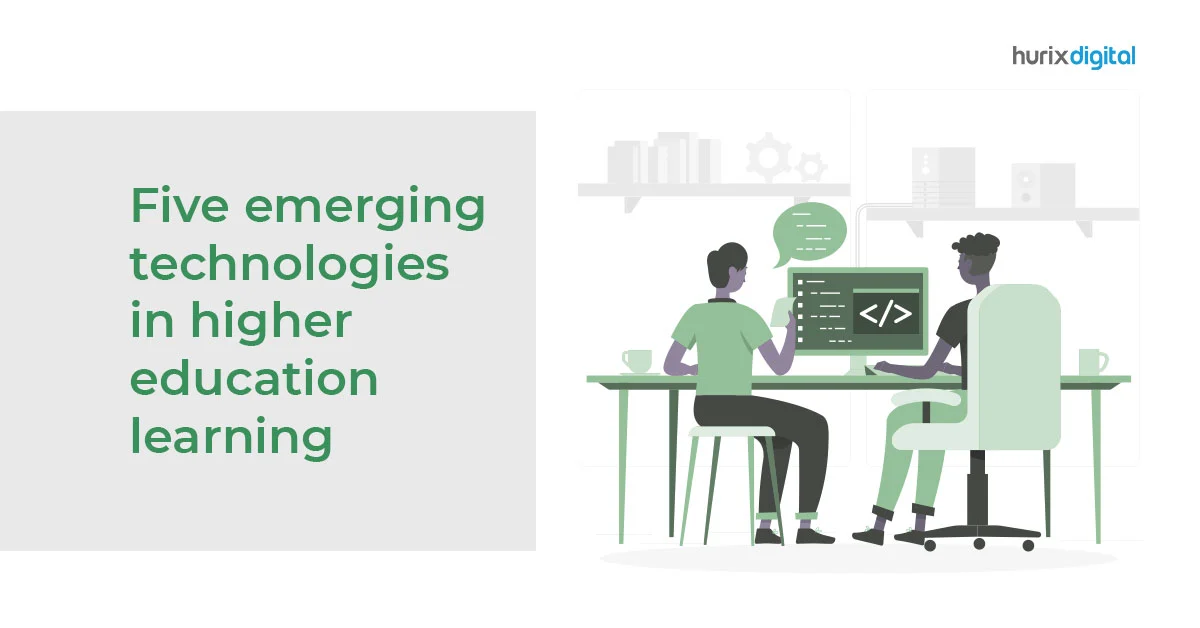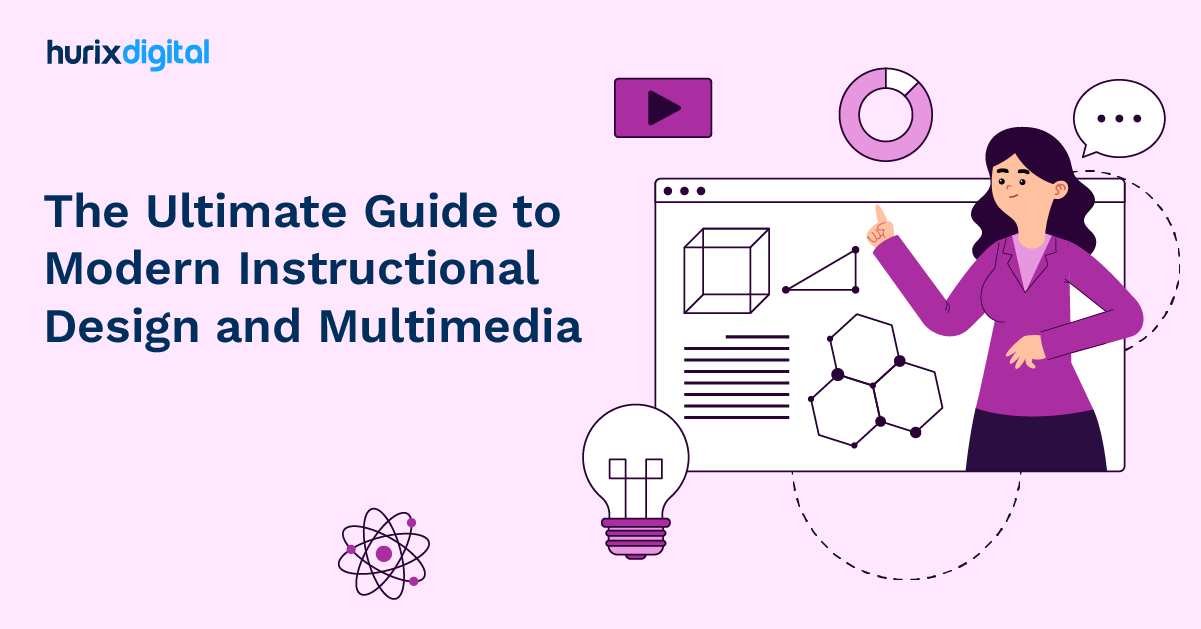
Five Emerging Technologies in Higher Education Learning!
In today’s rapidly evolving digital landscape, higher education institutions are embracing cutting-edge technologies to enhance teaching and learning experiences. From immersive virtual environments to AI-powered personalization, these innovations are reshaping how students engage with content, instructors, and each other. This blog explores five transformative technologies driving the future of higher education.
Table of Contents:
- Introduction
- Five Emerging Technologies to Significantly Impact Higher Education Learning
- Conclusion
Introduction
Higher education technology companies are constantly looking for new and innovative ways to enhance the learning experience for students. With the advent of technology, the way we learn and teach constantly evolves.
Five Emerging Technologies to Significantly Impact Higher Education Learning
1. Virtual and Augmented Reality
Virtual and augmented reality (VR/AR) technology has been gaining popularity in recent years as a tool to enhance the learning experience for students.
VR technology immerses users in a virtual environment, allowing them to interact with simulations, models, and other visual aids in an impossible way with traditional methods. AR technology, on the other hand, overlays digital information onto the user’s view of the real world.
One of the key benefits of VR/AR technology in higher education is that it allows students to engage in hands-on learning, even when they are not physically in the same location.
For example, VR technology can create virtual field trips that let students explore natural landmarks, historical sites, and other locations from the comfort of their classrooms. This technology can also create virtual labs where students can conduct experiments and gather data in a controlled environment.
However, it’s also important to note that VR/AR technology can be costly and require specialized equipment, which may be a barrier for some institutions. Further, it’s important to ensure that VR/AR technology is used effectively and meaningfully rather than just as a gimmick.
2. Artificial Intelligence and Machine Learning
Higher education technology companies are increasingly using artificial intelligence and machine learning to analyze student data and personalize the learning experience. Using data on student performance, these technologies can predict which students may be at risk of falling behind and provide them with additional resources and support.
AI-enabled tutoring systems can also help students improve their understanding of a topic through personalized feedback and instruction.
AI and ML can also automate repetitive and time-consuming tasks such as grading and assessment, freeing educators to focus on more important tasks such as providing personalized instruction and feedback to students.
However, it is important to note that AI and ML are not a panacea, and the implementation of these technologies in higher education learning should be done thoughtfully. It’s crucial to consider factors such as data privacy, ethical considerations, and how to ensure that the technology is inclusive and accessible to all students.
Overall, the incorporation of AI and ML in education can enhance students’ learning experience by providing them with personalized instruction, predicting student performance, and improving student outcomes.
3. Adaptive Learning
Adaptive learning technology is designed to adjust the content and pace of instruction to match the needs of individual students. This technology in higher education uses data on student performance to identify areas where students need additional support and provide them with targeted instruction.
The goal of adaptive learning is to create a personalized learning experience for each student, helping them to progress at their own pace and reach their full potential.
One of the main benefits of adaptive learning technology is that it can improve student outcomes by providing targeted instruction. By identifying areas where students need additional support, adaptive learning systems can provide targeted instruction tailored to their specific needs.
This can lead to improved student performance and retention, as students can receive instruction tailored to their specific needs.
Adaptive learning technology can also create personalized learning pathways for students, allowing them to progress through the material at their own pace. By providing students with the opportunity to work at their own pace, adaptive learning systems can help to increase student engagement and improve student outcomes.
4. Learning Management Systems
Learning Management Systems (LMS) are web-based platforms that provide a central location for students to access course materials, assignments, and other resources. These systems can also track student progress, provide feedback, and facilitate communication between students and instructors.
With more classes being offered online, LMS technology is becoming increasingly important in higher education.
One of the main benefits of LMS technology is that it can provide students with easy access to course materials and resources, which can greatly enhance their learning experience. In addition, by providing students with a centralized location to access course materials, assignments, and other resources, LMS technology can help to increase student engagement and improve student outcomes.
The use of LMS technology in higher education is becoming increasingly popular. According to a report by MarketsandMarkets, the global LMS market is expected to grow at a CAGR of 19.1% between 2020-2025.
5. Gamification
Gamification incorporates game elements, such as points, badges, and leaderboards, into non-game contexts. For example, gamification can motivate and engage students in higher education, making learning more interactive and fun.
By using game elements, educators can create a more engaging learning environment that encourages students to take an active role in their education.
- One of the main benefits of gamification in education is that it can increase student engagement and motivation. By incorporating game elements into the learning process, educators can make learning more interactive and fun, which can help keep students motivated and engaged in the learning process. This can lead to improved student outcomes, as students are more likely to retain information when they are engaged and motivated.
- Another benefit of gamification in education is that it can be used to create personalized learning experiences. By using game elements, educators can create customized learning paths that allow students to progress at their own pace. This can help increase student engagement and improve student outcomes.
Gamification is still a relatively new concept in education, but it is expected to grow in popularity in the coming years. According to a report by MarketsandMarkets, the global gamification market is set to grow at a CAGR of 27.4% between 2020-2025.
Conclusion
Higher education technology companies are constantly innovating and developing new technologies to enhance the learning experience for students. From virtual and augmented reality to adaptive learning and gamification, these emerging technologies can potentially transform how we learn.
As technology in higher education keeps growing, it will be important for educators and institutions to stay informed about the latest developments and how they can be used to improve learning outcomes.
If you want to know more about how these technologies can enhance the learning experience, please visit our service page or contact us for more information.
Additionally, check out our other blogs on the benefits of Personalized Learning and how to use gamification in your Corporate Microlearning for more in-depth information on these topics.

Senior Vice President
A Business Development professional with >20 years of experience with strong capability to sell new solutions and develop new markets from scratch. New Market Entry Specialist with experience working in the largest emerging markets. Exceptional experience in conceptualizing, ideating and selling new learning technologies like VR AR, etc. across multiple industry verticals.








